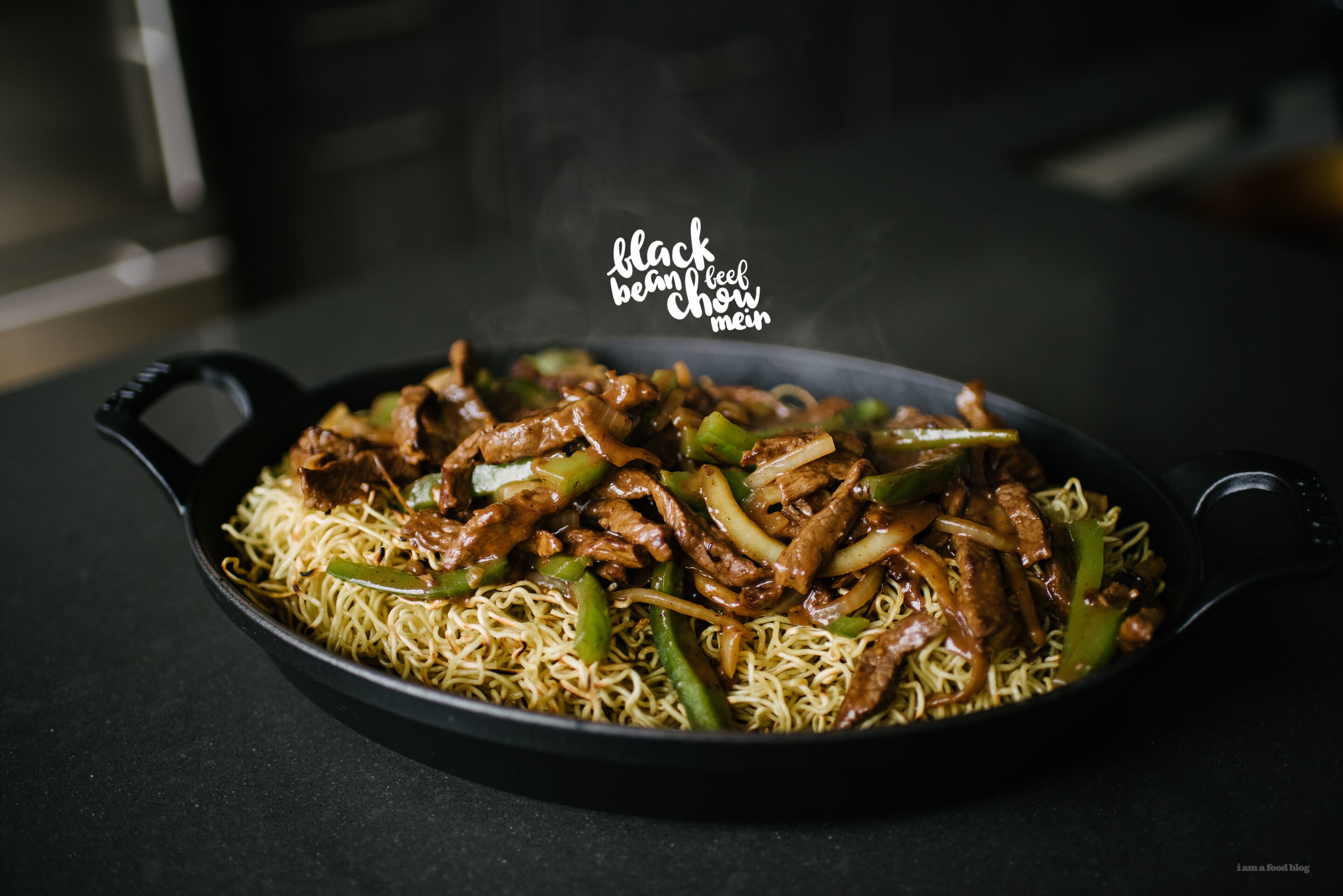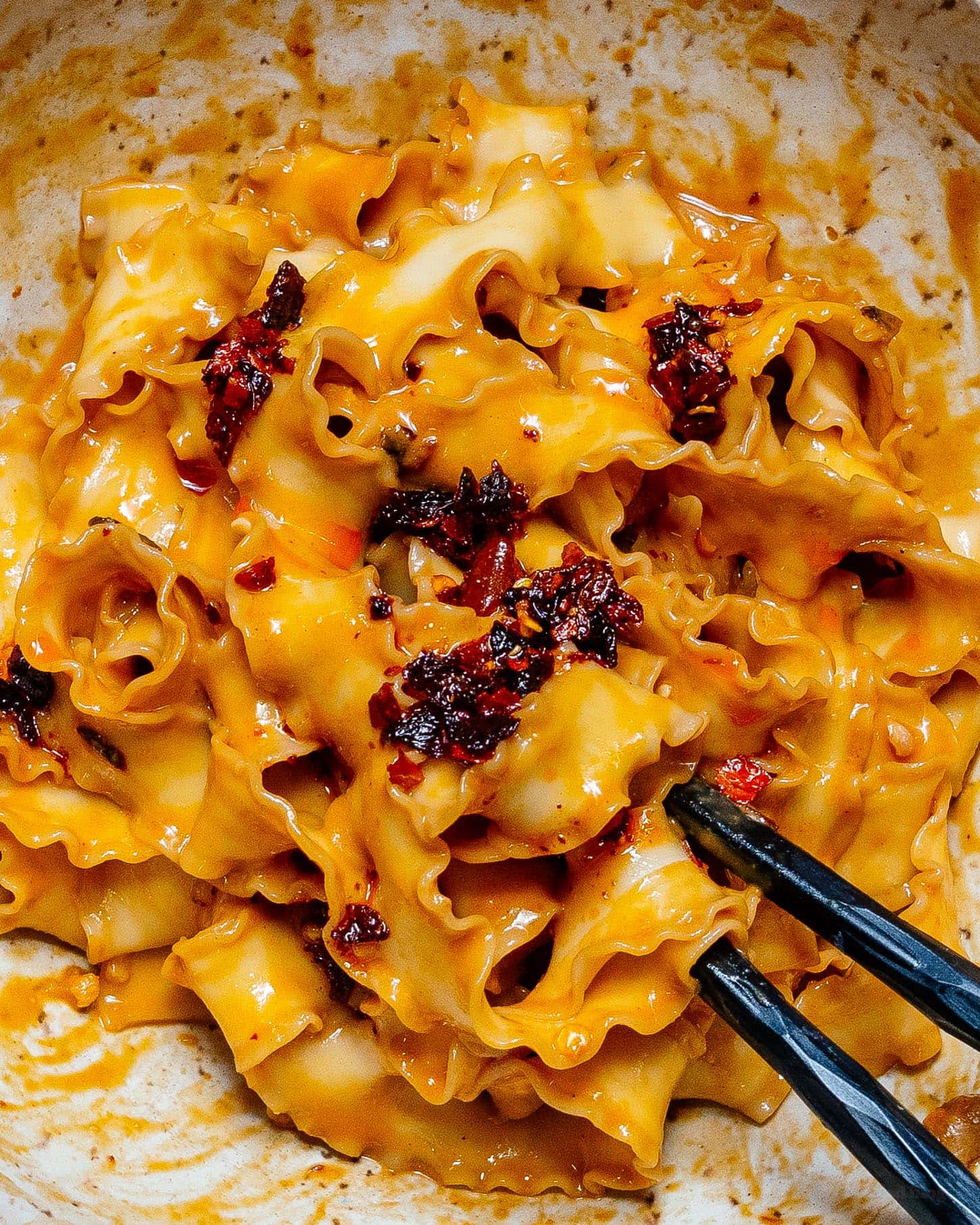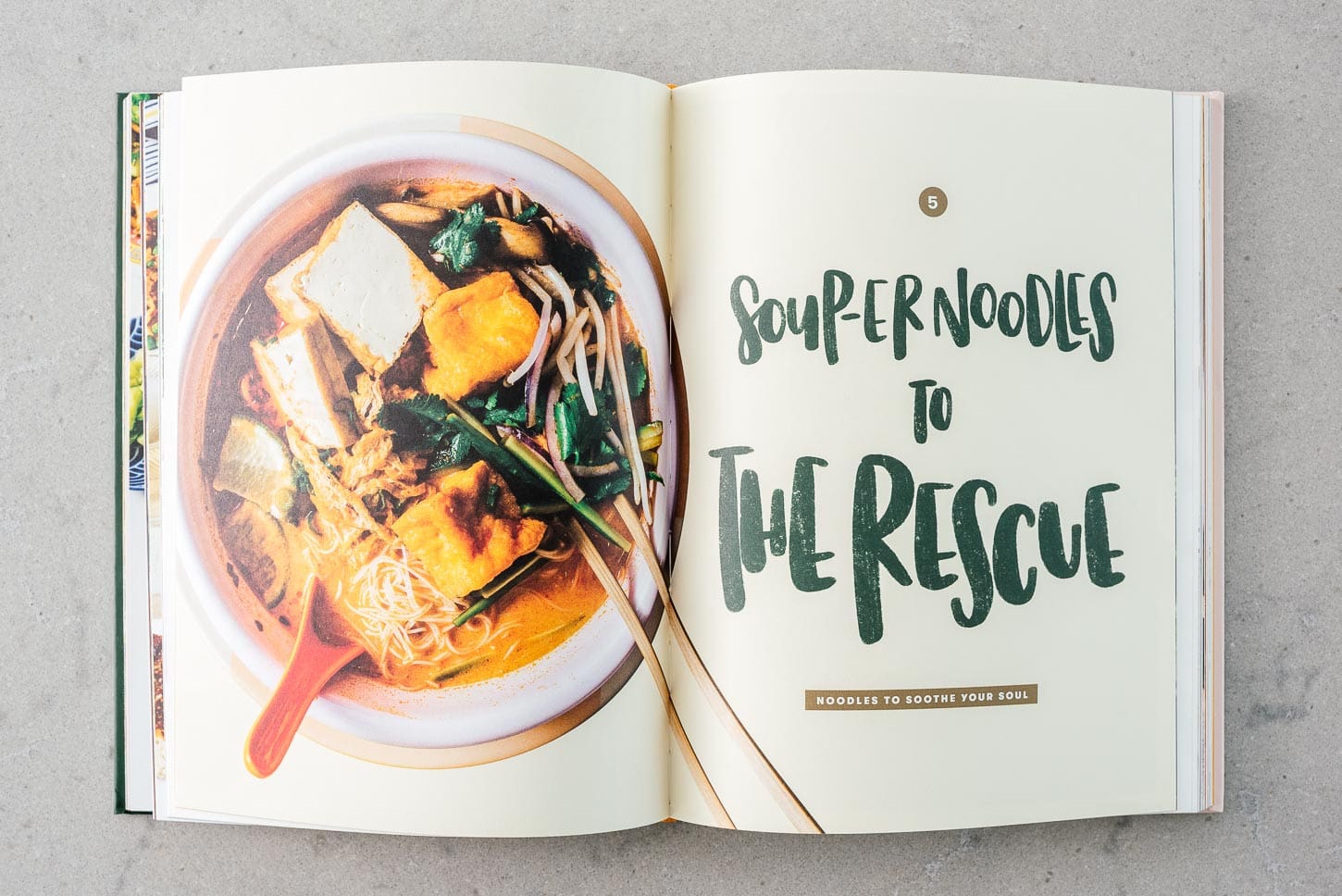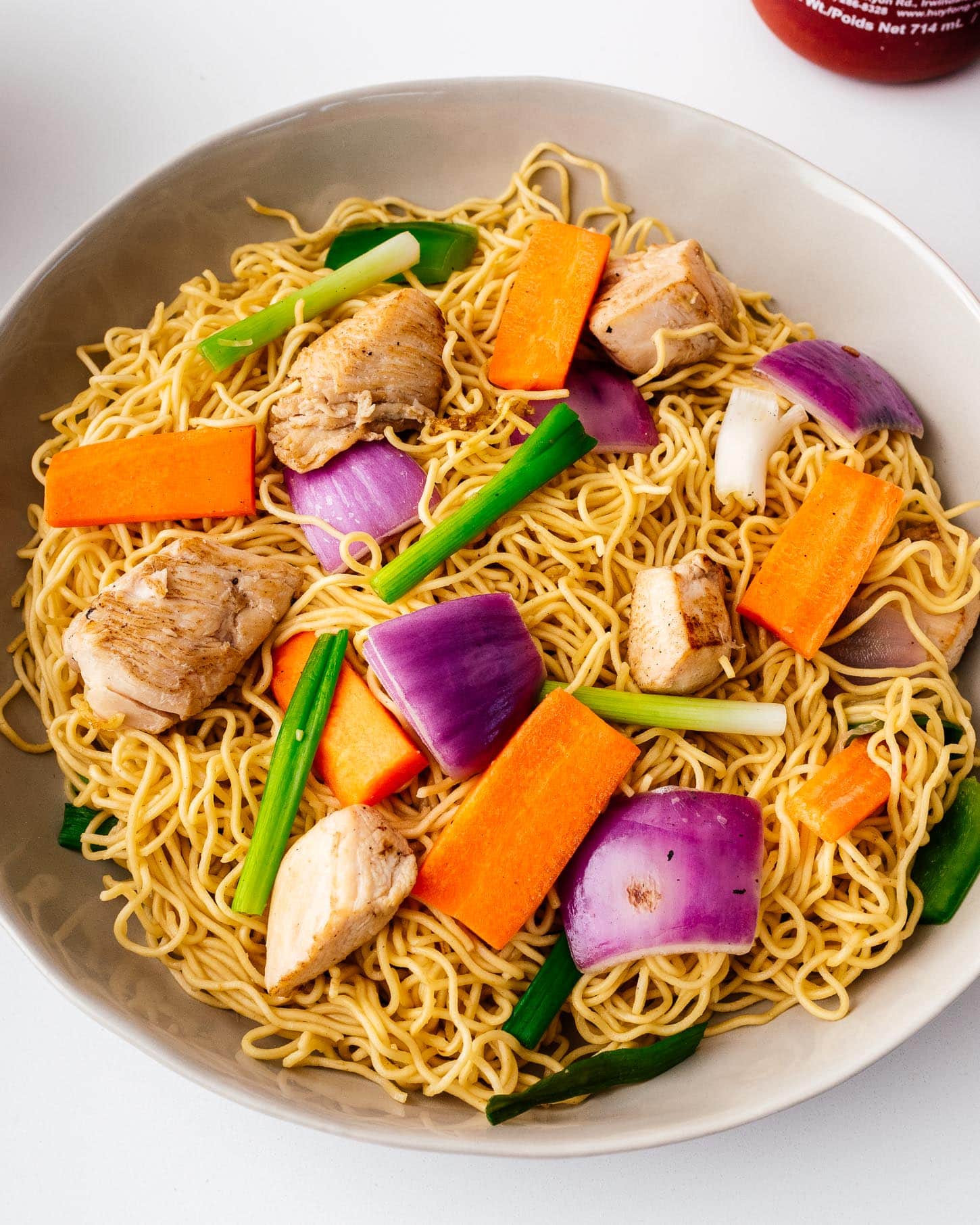
I love all carbs but I have to admit that noodles are my ultimate fave. I’m pretty sure that I can eat noodles all day, every day for the rest of my life and be perfectly happy. Especially if the noodle dishes include chow mein.
I grew up eating chow mein: homemade for lunch or dinner; chow mein at parties; at the end of Chinese banquets; or just all the time, every time. It’s smoky, crispy, full of flavor and so, so good. I love that it’s an all-in-one meal: protein, vegetables, and carbs in one delicious dish.
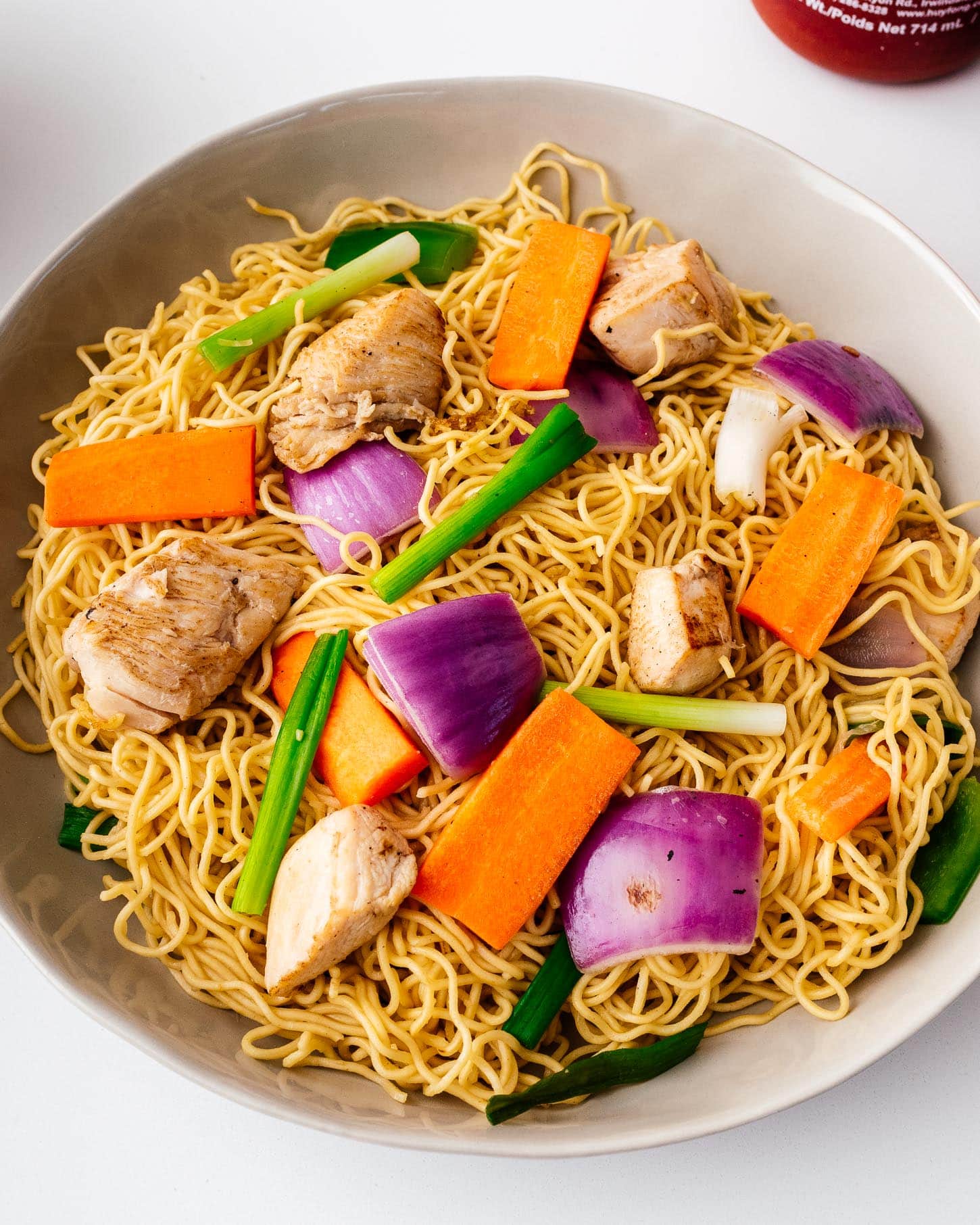
What is chow mein
Chow mein literally means fried noodles. The dish consists of thin egg noodles stir-fried with aromatics, proteins, and vegetables. It’s the perfect one pan meal: it’s quick to make, and so versatile.
There are actually two kinds of chow mein: a crispy version and a saucy version. Calling one crispy is kind of confusing because both versions should be crispy, but the main difference is how the sauce is incorporated into the dish.
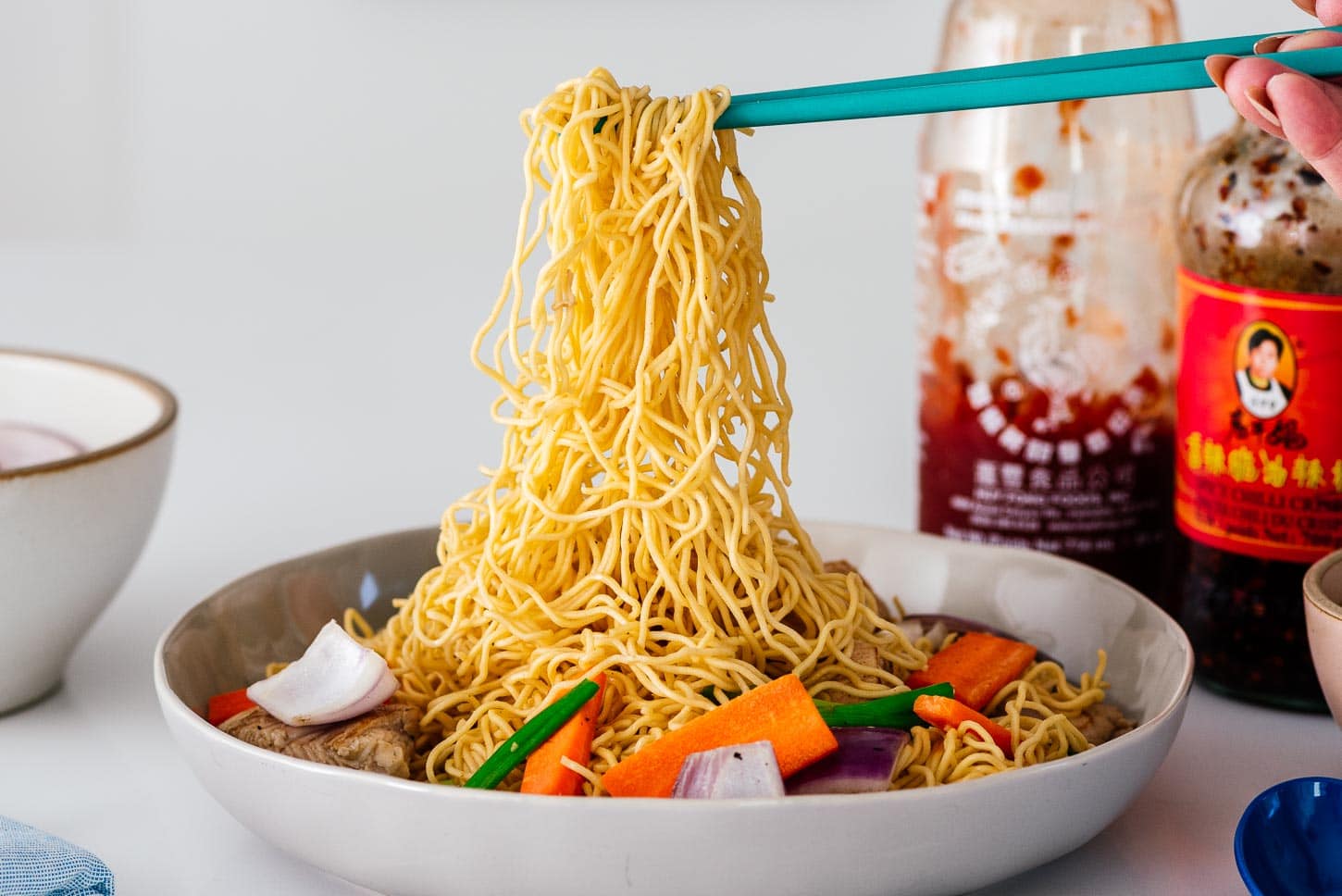
How to make chow mein
- Prep the ingredients. Wash and cut the vegetables into bite size pieces, slice the chicken into strips and marinate it.
- Soak and drain the noodles. Place the fresh chow mein noodles in a bowl with hot tap water and soak for 1 minute then drain well.
- Make the sauce. In a bowl, mix together the chow mein sauce: oyster sauce, sweet soy sauce, toasted sesame oil, and a bit of water and pepper.
- Cook the protein. Heat up the wok add a generous amount of oil and cook the chicken until seared and cooked through.
- Add the vegetables. Stir in the veggies and cook until tender crisp but not soft.
- Crisp up the noodles. Add the drained noodles and mix everything together.
- Sauce and enjoy! Pour in the sauce, turn the heat up, mix and sear to give it that characteristic smoky chow mein flavor.
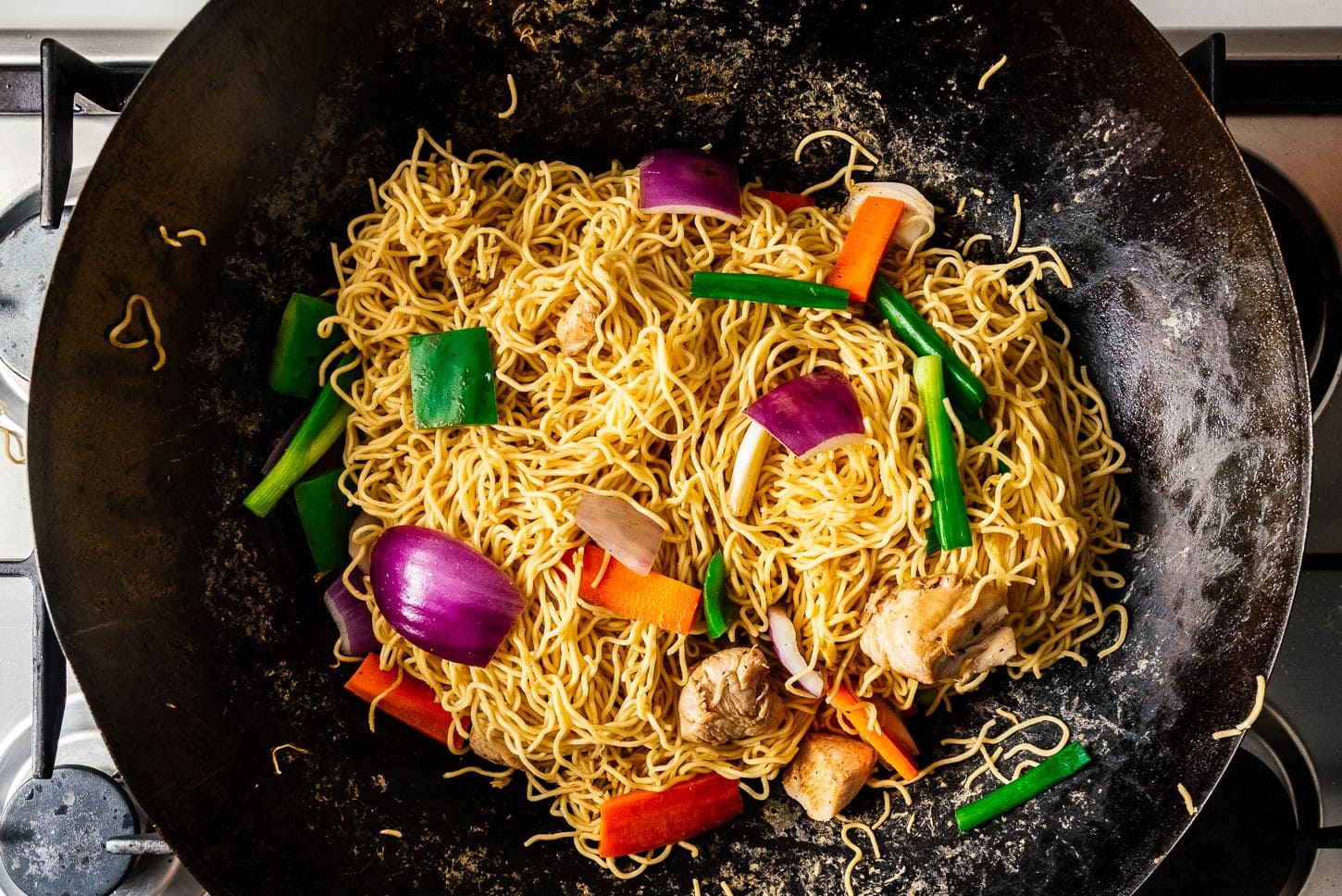
Ingredients
- Fresh noodles – The noodles used for chow mein are fresh, thin, crinkly noodles made with flour and eggs. They come sold fresh, refrigerated in bags at Asian grocery stores. More on noodles below.
- Chicken – I like using chicken thighs because they’re juicy and don’t overcook easily, but you can use chicken breast as well. You can also go with beef or pork!
- Soy sauce – We’ll use soy sauce for the marinade for the meat so it gets a salty umami hit. Make sure you get naturally brewed soy sauce. We usually go for Lee Kum Kee or Amoy light soy sauce.
- Cornstarch – Cornstarch adds a little bit of heat protection for the chicken so it doesn’t dry out. It also gives the chicken a slightly soft velvety coat. It’s the difference between restaurant style stir fries and home stir fries. Don’t skip out on the cornstarch!
- Shaoxing wine – This is the secret ingredient to what makes restaurant Chinese food taste so good. It adds a lightly sweet, earthy, nutty, complex aroma to your Chinese cooking. Read more about it here.
- Oyster sauce – Oyster sauce is a thick savory sauce with a hint of caramel sweetness and umami. It can be found in the Asian aisle of any grocery store. If you see Lee Kum Kee bottle with two people in a boat, go for that one. It’s the premium oyster sauce which lists oysters as its first ingredient, unlike the one with the red panda label which has oysters listed further down the list. If you’re vegetarian, they sell vegetarian oyster sauce too!
- Sweet soy sauce – This is the key ingredient that adds umami and sweetness to the sauce. Sweet soy sauce is darker, more caramelized, and will make your noodles beautifully brown. We like Lee Kum Kee brand.
- Toasted sesame oil – Toasted sesame oil adds a light nuttiness and warmth to the sauce.
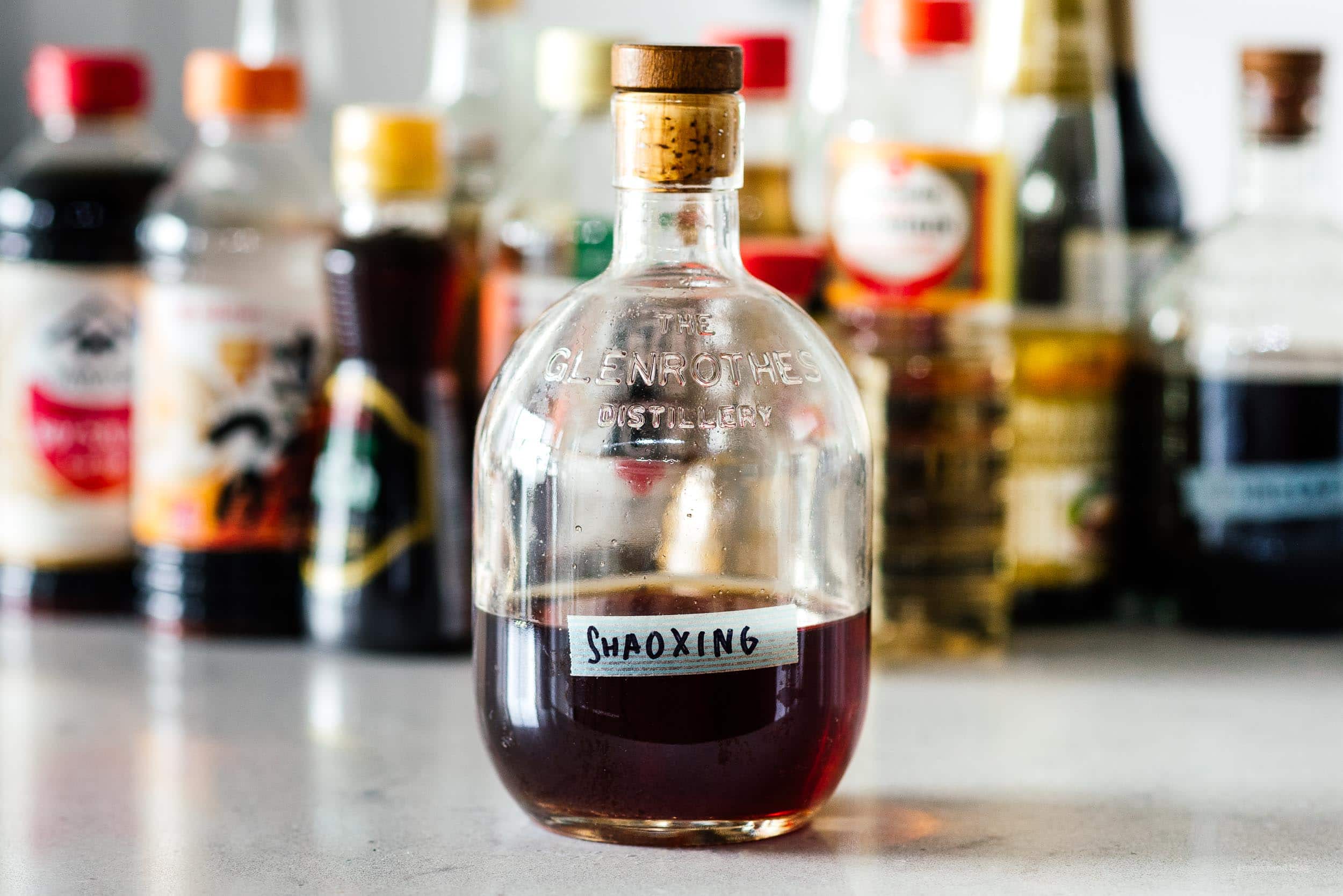
What noodles to use
Chow mein noodles are yellow, thin, wavy egg noodles. Made from flour and eggs, they come fresh in bags in the refrigerated noodle section at most grocery stores (especially the Asian ones). You can also buy them dry in the noodle aisle, but fresh noodles are best and are usually located in a fridge near the mushrooms or tofu. Sometimes they’re labeled as Hong Kong style or Cantonese style, or steamed.

How to prep fresh chow mein noodles
The fresh noodles that you get in the refrigerated aisle are already par-cooked. After buying them, store in the fridge.
All you have to do to prep them before adding them to the pan is simply soak them in hot tap water for a couple of seconds then drain well. You don’t want to boil them or leave them in the hot water too long because they’ll get soft, mushy, and break into short strands.
Chow mein sauce recipe
The sauce is what gives chow mein all of its seasoning and addictive flavors. It’s a mix of oyster sauce, sweet soy sauce, toasted sesame oil and freshly ground black pepper. It’s full of sweet and savory umami and seriously SO good. To make: in a bowl or measuring cup, mix together 1/3 cup water, 2 tbsp oyster sauce, 3 tbsp sweet soy sauce, 1 tsp toasted sesame oil, and white or black pepper to taste. Add it to the pan with the noodles and turn up the heat to give everything a searing crisp.
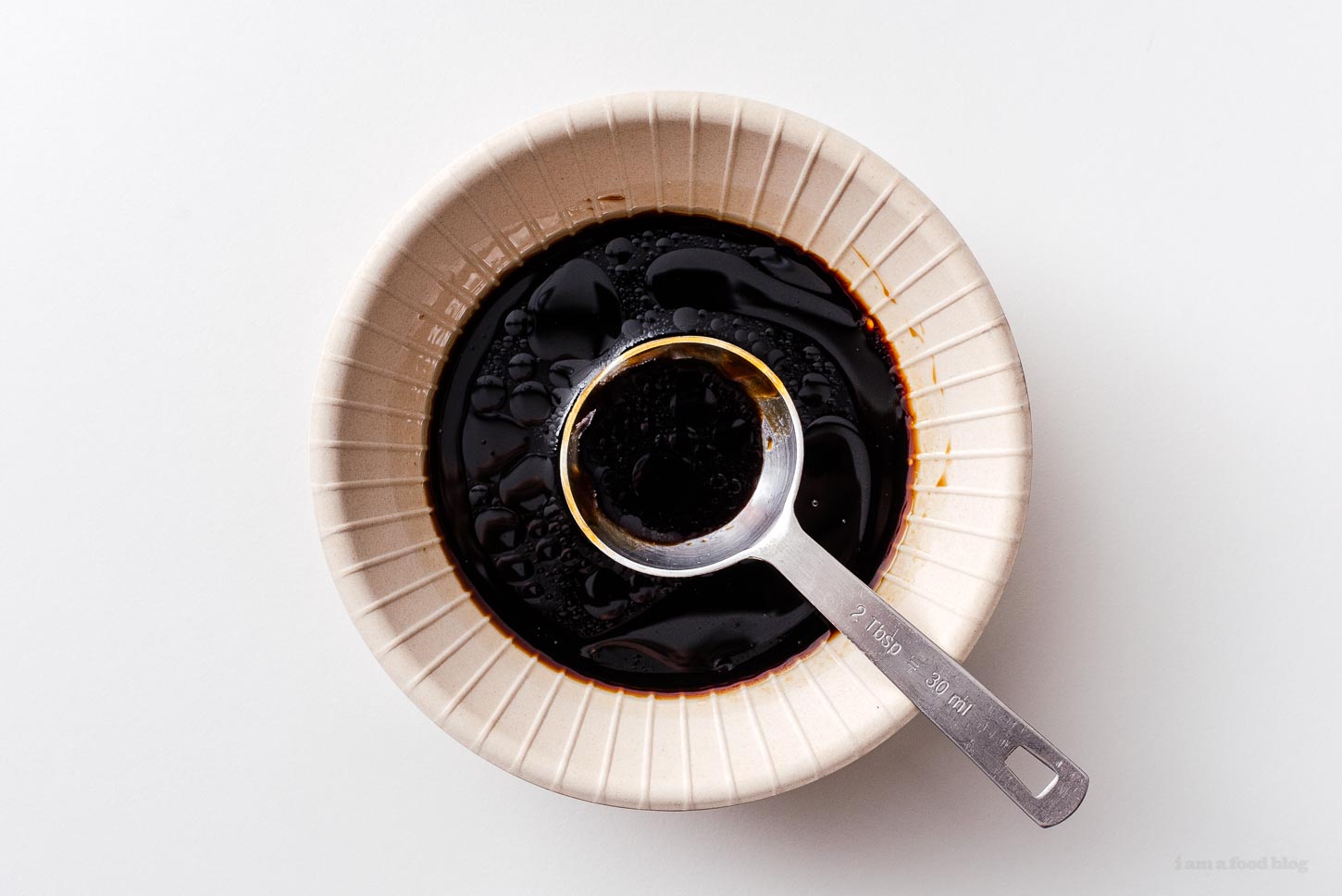
Crispy chow mein
Crispy chow mein is where the sauce is added to the noodles while you’re cooking. An umami heavy sauce goes into to the wok with the noodles and everything tosses and fries together until smoky and crisp. A classic example is Hong Kong style soy sauce chow mein.
In Chinese we call this type dry fried or gon (乾), although it’s typically not included in the name of the dish – Chinese people generally know which ones are crispy or saucy.
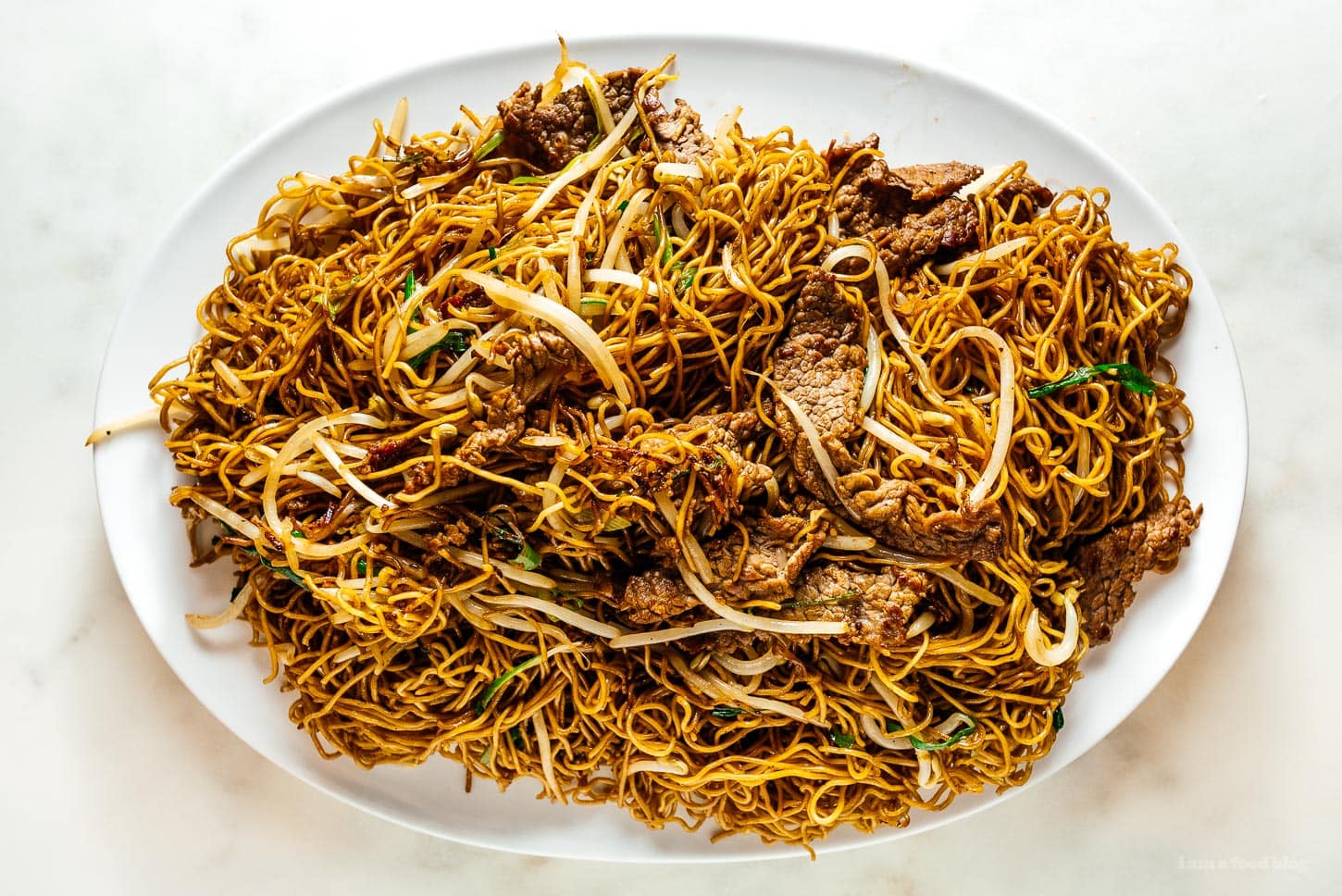
Saucy chow mein
Confusingly, the saucy version also has crispy noodles. In fact, it has an entire giant crispy noodle cake where a thick gravy type sauce containing meats and vegetables is put on top right before serving. At the table, you mix up the sauce with the noodles and enjoy the contrast between the extra crispy noodles and gravy. A good example of this is black bean beef chow mein. In Chinese we call this type wet fried or sup (濕).
Also confusingly all chow mein dishes can be either crispy or saucy. Chicken chow mein can come as crispy with pieces of chicken mixed in with the noodles *or* it can come with chicken pieces in a thick gravy that’s served on top of a crispy noodle cake.
For the purpose of this post, we’re only going to be talking about the crispy version; the kind without the gravy on top.
Now that you know the difference between crispy and saucy, how about chow mein vs lo mein?
What is the difference between lo mein and chow mein?
There are two main differences between chow mein and lo mein.
- The noodles. Chow mein noodles are thin, crinkly, and crispy. Lo mein noodles are thicker, chewier, and smoother. Both types of noodles are usually made with flour and eggs.
- The way they’re cooked. Chow mein noodles crisp up in the pan over high heat so you get a smoky, crunchy-crispy texture. Lo mein noodles toss gently in sauce over heat so the noodles stay soft and chewy.
Learn more about lo mein here.
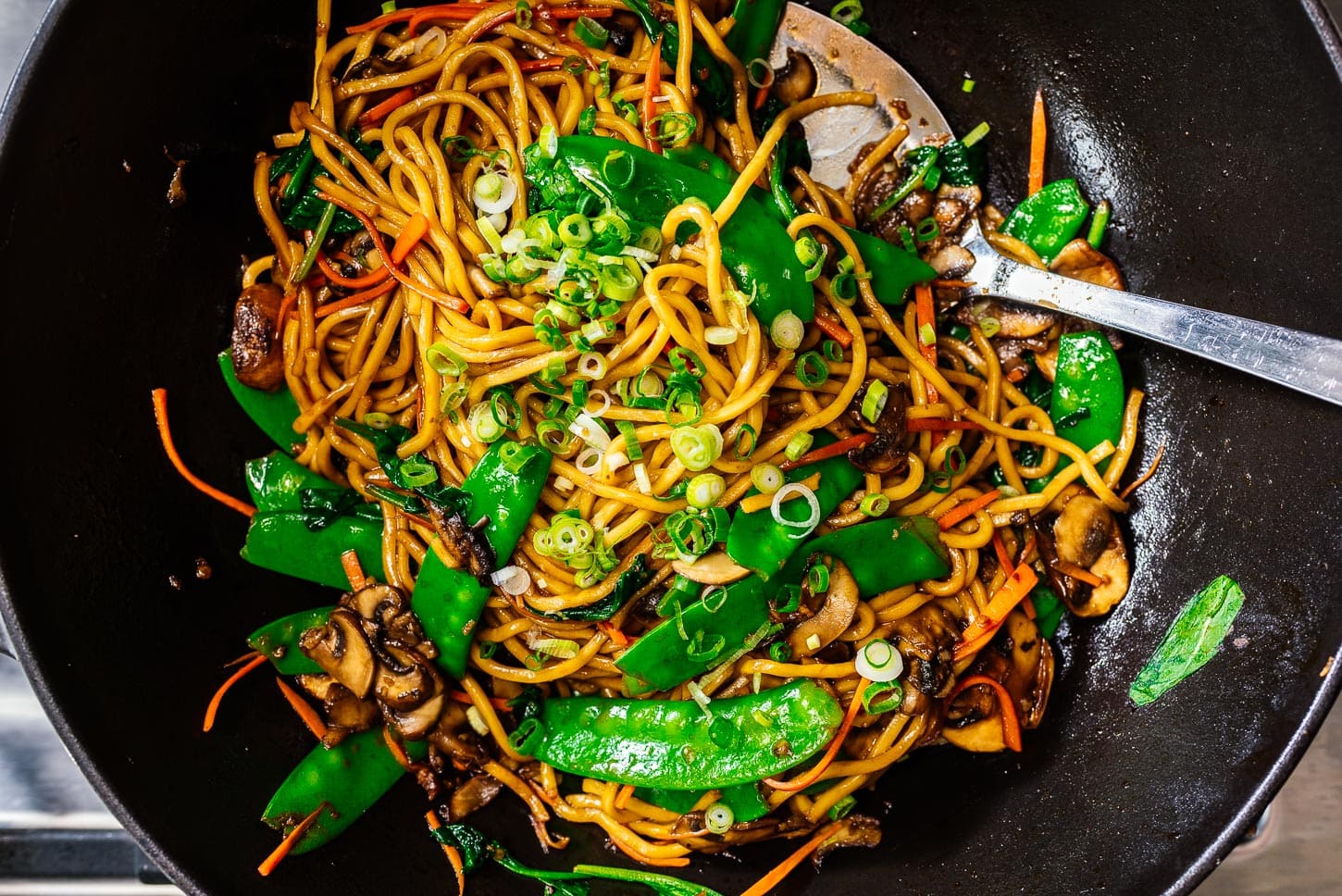
Variations
Vegetarian
Skip out on the chicken and just sear a bunch of vegetables until tender crisp. All and any vegetables work here, just be sure to cut them up into manageable bit sized pieces.
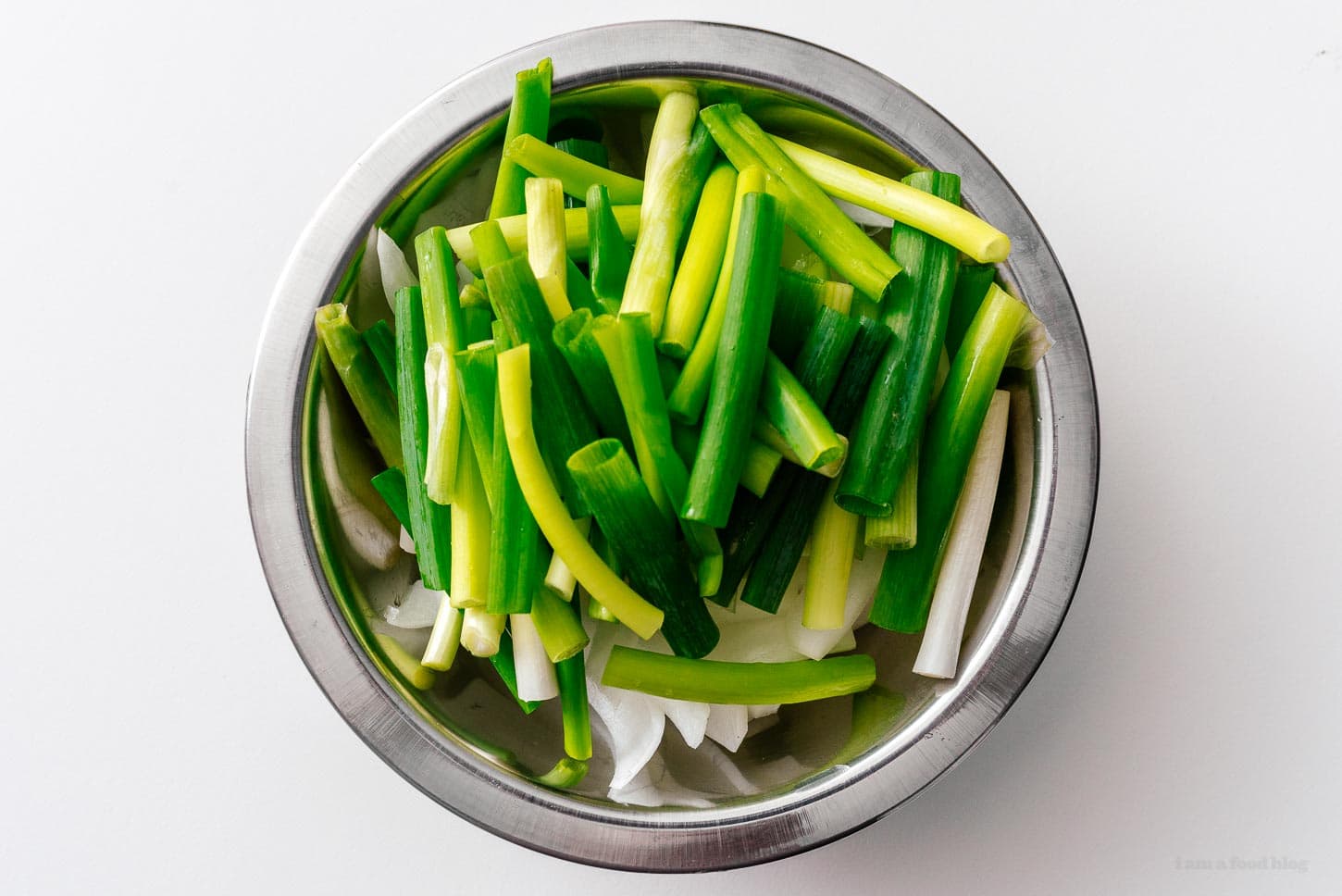
Beef
Instead of marinating chicken, marinate some beef for beef chow mein. You can use flank steak, skirt steak, or thinly sliced sirloin. Cut it into thin strips against the grain so the strips of beef are tender and juicy.
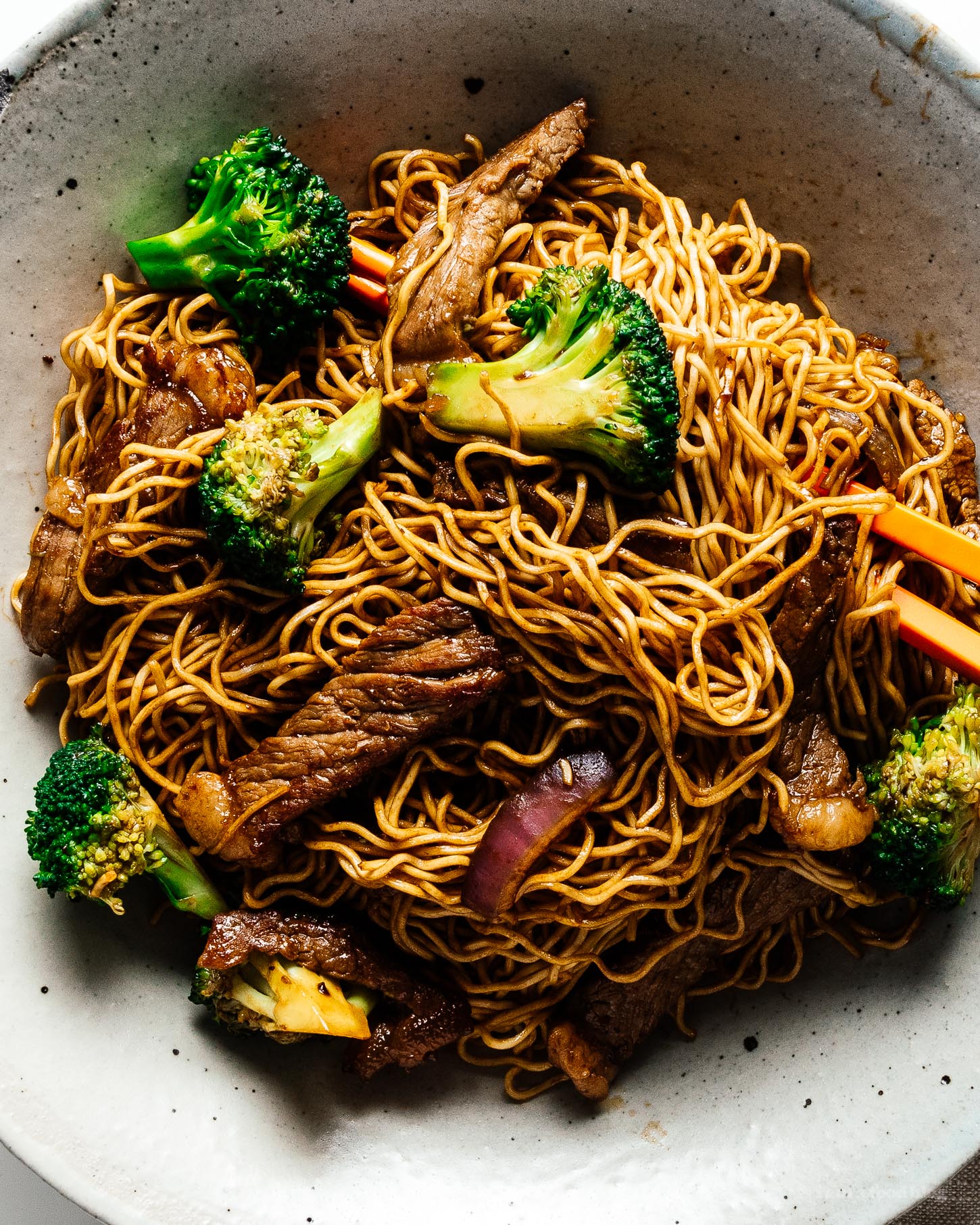
Soy sauce
Hong Kong style supreme soy sauce fried noodles or si yau wong chow mein 豉油皇炒麵 is one of the most popular fried noodles out there, especially at dim sum. It’s a simple soy sauce fried noodle with bean sprouts, scallions, and onion. So simple, but so good! Check out this post to learn more.
Wok Cooking
If you have a carbon steel wok (not a teflon coated one), this is the most authentic way to make chow mein. To ensure that your noodles don’t stick to the wok, be sure to get it really hot before adding oil. There’s a saying: hot wok, cold oil, and it’s true. Have all your ingredients prepped beforehand – wok cooking is fast and there’s no time to stop to look for ingredients.
To make chow mein in a wok: heat a dry wok on high heat, watching carefully for smoke. Once your wok is smoking hot, add oil, then immediately add your chicken and toss. When the chicken is cooked, remove it and adda little more oil, then toss the veggies. When the veg is cooked, add the noodles, chicken, and the sauce and toss vigorously until the noodles are firm and crisp.
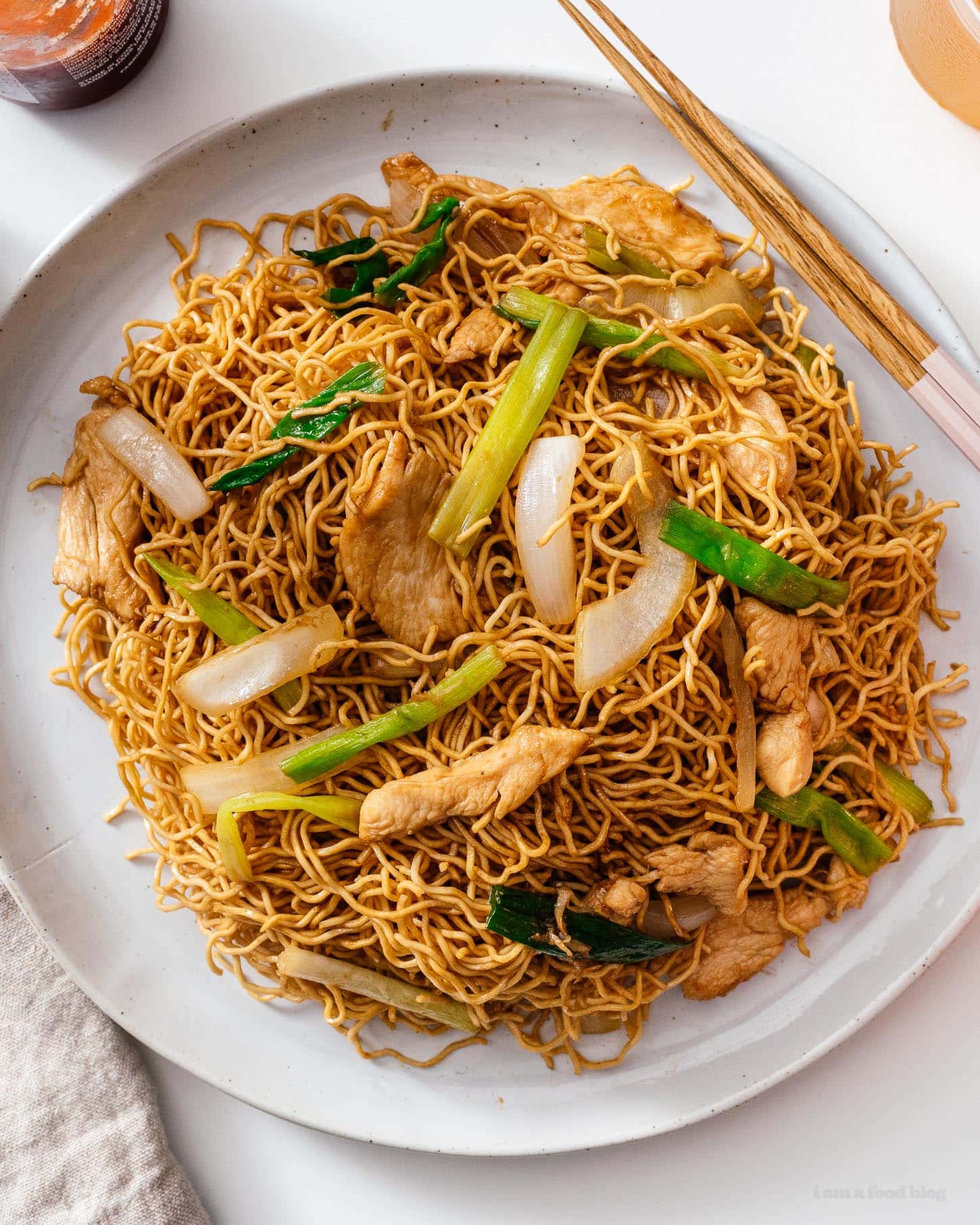
Air Fryer Saucy Chow Mein
This is a super simple way of making saucy chow mein – the kind that has a giant crispy noodle cake that has a thick gravy on top that soaks into the noodles making it extra saucy and delicious. My new favorite way of making a giant crispy noodle cake is the air fryer! Simply crisp up the noodles in the air fryer and while it’s doing it’s thing, make the sauce on the stove. When the noodles are crispy, pour the sauce on the noodles, letting it soak into all the crevices. Seriously, so good!
To make air fryer saucy chow mein: Soak the chow mein noodles in hot water for 1 minute then drain well. Toss the drained noodles with 2 tbsp neutral oil then arrange the noodles the the air fryer basket. Make sure you lightly oil or line the air fryer basket so the noodle cake is easy to remove. Fry the noodle cake for 10-15 minutes at 350°F, flipping once.
While the noodles are crisping, make the sauce. We’re going to use the exact same ingredients as the crispy chow mein down below. Heat up 1 tbsp of oil in a frying pan and add the marinated chicken when hot. Cook, stirring, until browned and no longer pink. Add the onions and green onions and cook until the onions soften. Add the sauce, along with an extra 1/2 cup of chicken stock and 1 tsp cornstarch. Bring the sauce to a simmer until it thickens and coats the chicken. Remove the pan from the heat.
When the crispy noodles are done, remove them from the air fryer and place on a platter. Pour the chicken gravy on top and enjoy!
Happy noodling!


Chow Mein
#wprm-recipe-user-rating-0 .wprm-rating-star.wprm-rating-star-full svg * { fill: #f5a623; }#wprm-recipe-user-rating-0 .wprm-rating-star.wprm-rating-star-33 svg * { fill: url(#wprm-recipe-user-rating-0-33); }#wprm-recipe-user-rating-0 .wprm-rating-star.wprm-rating-star-50 svg * { fill: url(#wprm-recipe-user-rating-0-50); }#wprm-recipe-user-rating-0 .wprm-rating-star.wprm-rating-star-66 svg * { fill: url(#wprm-recipe-user-rating-0-66); }linearGradient#wprm-recipe-user-rating-0-33 stop { stop-color: #f5a623; }linearGradient#wprm-recipe-user-rating-0-50 stop { stop-color: #f5a623; }linearGradient#wprm-recipe-user-rating-0-66 stop { stop-color: #f5a623; }
Ingredients
- 1 lb fresh chow mein noodles
- 1 lb chicken cut into strips
- 1 tbsp soy sauce
- 2 tsp cornstarch
- 2 tsp Shaoxing wine
- 2 tbsp oyster sauce
- 2 tbsp sweet soy sauce
- 1 tsp toasted sesame oil
- 1/4 tsp white pepper or to taste
- 2 tbsp oil for the pan or as needed
- 1/2 medium onion sliced
- 1 bunch green onions sliced into 2" lengths
Instructions
-
Soak the noodles in hot tap water for 1 minute, then drain well and set aside.
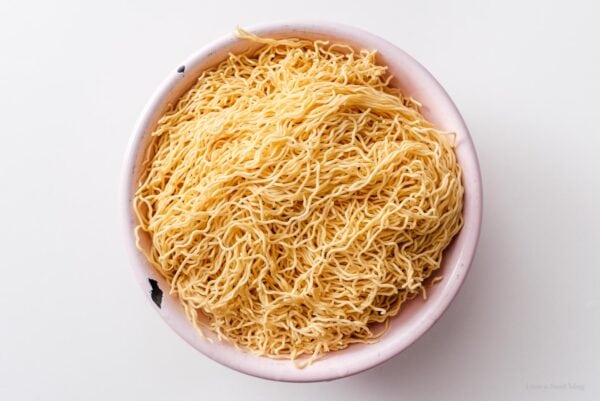
-
In a bowl, mix together chicken chunks with the cornstarch, soy sauce, and shaoxing wine. Let marinate.
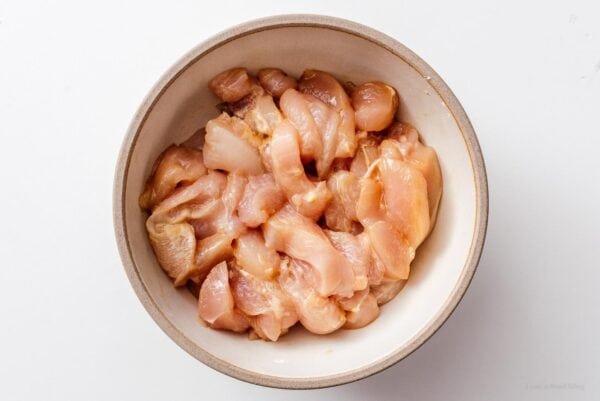
-
In another bowl, whisk together 1/3 cup water, the oyster sauce, sweet soy sauce, toasted sesame oil, and pepper.
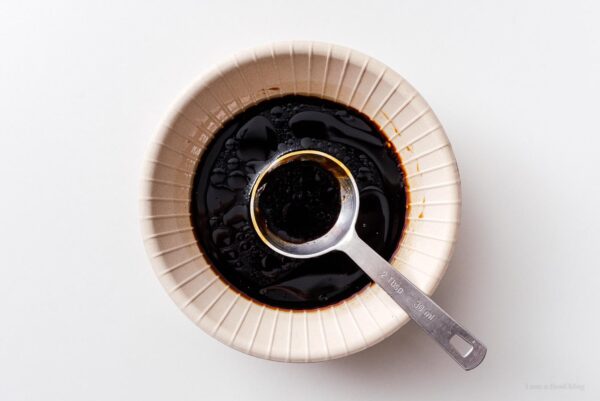
-
Heat up a generous amount of oil in a wok over medium high heat. When hot, add the chicken, along with any marinade in the bowl and cook, stirring occasionally, until the chicken browns and cooks through.
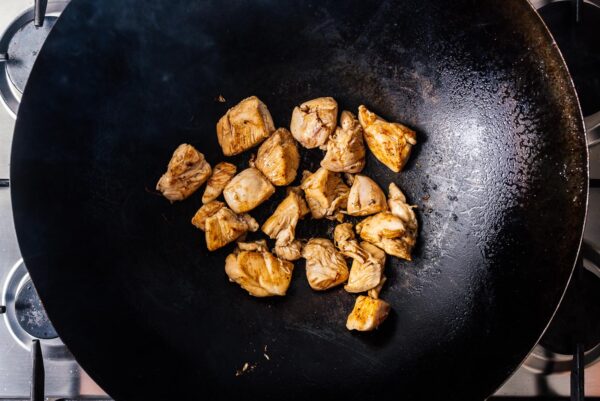
-
Add the onions and cook until the onions soften and the green onions are bright green.
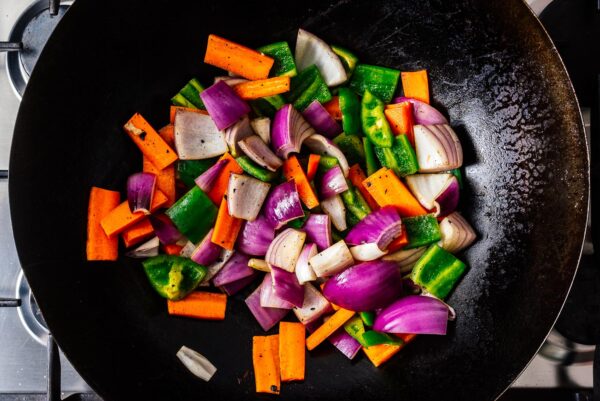
-
Add the drained noodles and the sauce and toss everything together. Turn the heat up to high and add a searing crisp. Remove the noodles from the pan and enjoy!
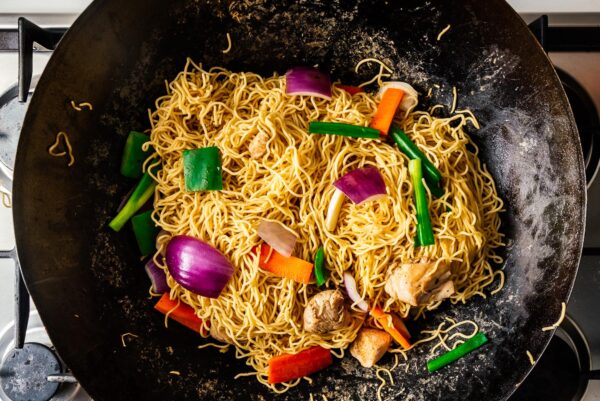
Notes
Estimated Nutrition
Calories from Fat 260

